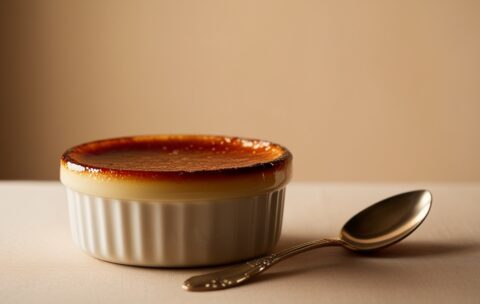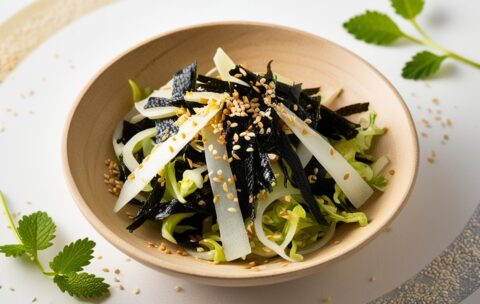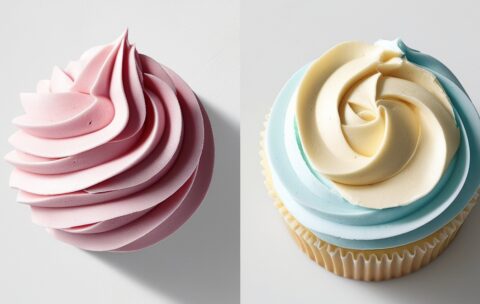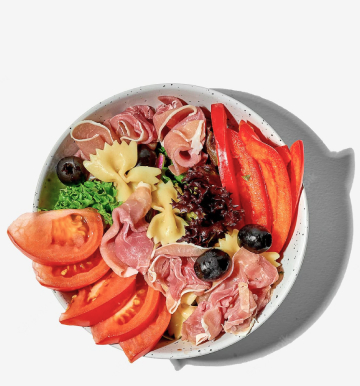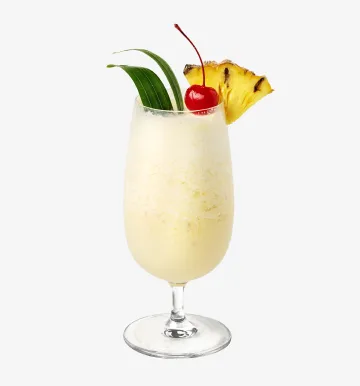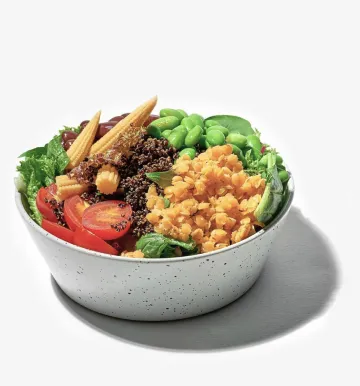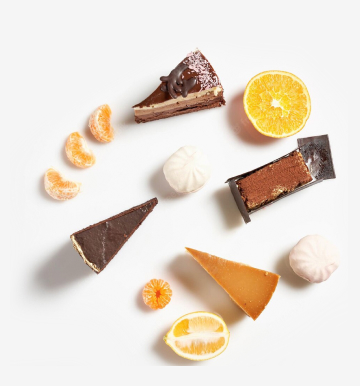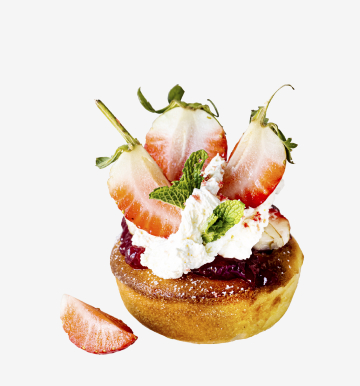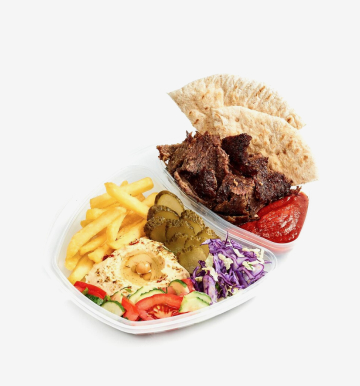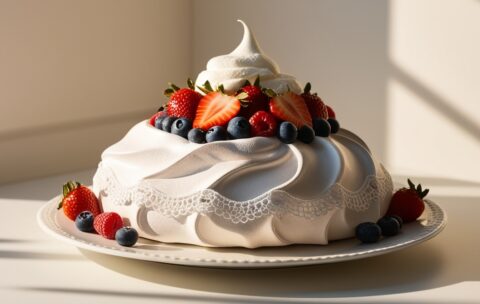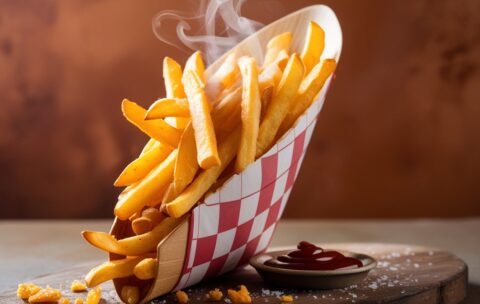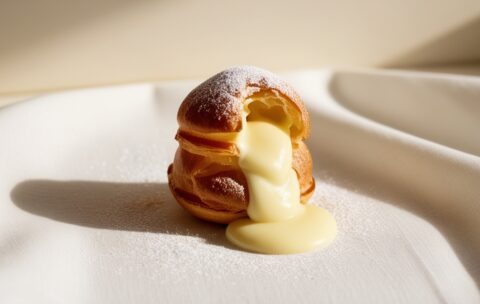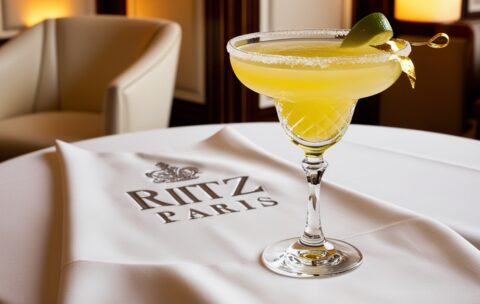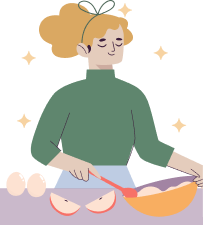Home Update 02
October 4, 2023 2025-06-05 13:04Home Update 02
Become a Home Chef
Learn to cook from scratch and master restaurant-quality meals in your own kitchen. Perfect for beginners and food lovers.

Our Top Courses
We've selected the best programs to get you started. Each course offers step-by-step lessons, hands-on recipes, and guaranteed results — even for beginners.
Mastering Chocolate Cakes
4 Lessons
1.4 hour
Intermediate
What you'll learn
Ingredient Essentials
Understanding Dutch-process vs. natural cocoa
Choosing between all-purpose, cake, and bread flour
Role of oil vs. butter for moisture
Batter Techniques
Creaming method for light layers
One-bowl “melted-chocolate” method for dense cakes
Whipping egg whites for chiffon-style chocolate cake
Baking & Structure
Oven temperature calibration and its impact on rise
Tips for level cakes: pan prep, baking strips, and testing doneness
Troubleshooting: sunken centers, gummy crumbs, uneven tops
Fillings & Frostings
Crafting silky chocolate ganache (TABLE BELOW)
Whipped chocolate buttercream vs. Swiss meringue buttercream
Simple whipped cream and mousse fillings
Decoration & Assembly
Stack and level layers with a cake comb and turntable
Smooth crumb coat, final coat, and ganache drip techniques
Simple piping (star tips) and fresh-fruit accents
Frosting Type Key Ingredients Best Use Case
Chocolate Ganache Equal parts dark chocolate & cream Drip cakes, glossy finishes
Swiss Meringue Buttercream Egg whites, sugar, butter, cocoa Stable layer cakes, rosettes
Whipped Chocolate Buttercream Butter, cocoa powder, powdered sugar, milk Light filling, quick spreads
Diamond Is Forever Martini
3 Lessons
59 minutes
Intermediate
What you'll learn
Ingredient Selection: How to choose the finest vodka or gin, the right sparkling wine, and food-grade iridescent dust (or edible glitter) for a dazzling effect.
Balance & Proportion: Techniques for blending spirit, vermouth (if using gin), and sparkling wine so that bubbles and glitter remain suspended.
Shake vs. Stir Techniques: When to shake for aeration and shimmer, and when to stir for a clearer, smoother presentation.
Sparkle Infusion: Methods for adding edible dust or glitter so that it floats and catches light without clumping or sinking.
Presentation & Garnish: Ways to rim the glass with sugar or fine glitter, and craft a minimalist twist or crystal garnish to enhance the “diamond” theme.
Crème Brûlée
5 Lessons
1.3 hour
Intermediate
What you'll learn
Custard Fundamentals (Paragraph):
You’ll discover how to create a smooth, silky custard by properly tempering egg yolks and controlling oven temperature during baking.
Flavor Infusion (List):
Selecting and preparing vanilla beans vs. extract
Balancing sugar and cream ratios for optimal richness
Incorporating subtle flavor variations (e.g., citrus zest, liqueur)
Caramelization Technique (Paragraph):
Master the process of evenly sprinkling sugar over the cooled custard and using a torch (or broiler) to achieve a perfectly caramelized, glass-like crust without burning.
Salvatore’s Legacy
5 Lessons
3.3 hours
Intermediate
What you'll learn
How to select and source top-tier amaro and ultra-aged rum for balanced depth
Techniques for saffron-infusing sweet vermouth and achieving optimal flavor extraction
Proper stirring methods to maintain clarity and texture
The importance of glassware choice and garnish to enhance aroma and presentation
How to adjust sweetness and bitterness ratios to suit individual palates
Pairing Salvatore’s Legacy with fine cheeses, dark chocolate, or light desserts
Japanese Seaweed & Sesame Slaw
8 Lessons
3 hours
Intermediate
What you'll learn
How to properly rehydrate and rinse dried wakame and hijiki seaweeds
Knife skills for shredding cabbage and slicing scallions
Technique for toasting sesame seeds to maximize aroma
Balancing savory, sweet, tangy, and nutty flavors in a Japanese-style dressing
Tips for keeping the slaw crisp without sogginess
Variations for added protein (tofu, shrimp) or heat (chili oil)
Paella Valenciana
2 Lessons
3.3 hours
Intermediate
What you'll learn
History and Regional Context
Origins of Paella Valenciana and its connections to Valencian agricultural traditions.
Distinctions between classic Valencian paella, seafood paella (Paella de Mariscos), and other regional variants.
Selecting and Preparing Ingredients
Rice varieties (Bomba vs. Calasparra) and their impact on texture.
Choosing quality proteins (chicken and/or rabbit), native beans (judía verde, garrafó), olive oil, and saffron threads.
Preparing vegetables: green beans (bajoqueta), garrafó beans, fresh tomatoes, and garlic.
Cooking Techniques and Timing
Building a sofrito base: sautéing meat, vegetables, and spices to develop depth of flavor.
Proper rice-to-liquid ratio and how to incorporate stock infused with saffron.
Achieving the prized socarrat (crispy rice crust) without burning.
Adjusting heat levels for even cooking and optimal moisture absorption.
Presentation and Serving
Traditional ways to serve Paella Valenciana—family style straight from the paellera.
Garnishing options (lemon wedges, fresh parsley) to enhance aroma and appearance.
Tips for reheating and storing leftovers without compromising texture.
Buttercream Icing Techniques
5 Lessons
59 minutes
Intermediate
What you'll learn
Buttercream Foundations: Basic ratios for American, Swiss, Italian, and French buttercreams; key differences in texture, sweetness, and stability.
Temperature Control: How to handle ingredients (room-temperature vs. chilled butter, sugar syrup stages) to prevent graininess or separation.
Flavoring & Infusing: Incorporating extracts, fruit purées, ganache, or cocoa; balancing sweetness and fat without compromising consistency.
Coloring Strategies: Best practices for gel vs. powdered colors; preventing “bleeding” or streaking when blending multiple hues (e.g., ombré or watercolor effects).
Spreading & Smoothing: Techniques for achieving glass-smooth sides (bench scraper, icing turntable, hot spatula method) and avoiding common marks or air pockets.
Piping & Decorative Textures: Creating rosettes, ruffles, ruffles, basketweave, petals, and multi-tone piping (hidden two-tone tips, reversible bags).
Stabilizing for Warm Climates: Adjusting recipes (adding meringue powder or corn syrup) so buttercream holds shape in humid or warm environments.
Troubleshooting Common Issues: Fixing grainy buttercream, curdled mixtures, overly soft or too-stiff icing; rescue methods (re-creaming, adjusting sugar syrup).
Art of Fondant & Modeling Chocolate
4 Lessons
1.2 hour
Intermediate
What you'll learn
Fondant Fundamentals: How to knead, roll, and cover a cake in smooth fondant; troubleshooting common issues like tearing or cracking.
Color Mixing & Painting: Methods for achieving uniform pastel or vibrant hues using gel, powder, and airbrush techniques; blending shades for gradients and ombré effects.
Modeling Chocolate Preparation: Step-by-step process to make stable, pliable modeling chocolate at home—adjusting ratios for firmness or flexibility.
Sculpting Techniques: Building 3D elements (flowers, animals, figurines) layer by layer; using armature supports for larger models.
Texture & Embellishment: Creating realistic surface details—wood grain, lace patterns, ruffles, and draping—using molds, veiners, embossing tools, and impression mats.
Piping & Detailing: Accenting fondant and modeling chocolate pieces with royal icing, edible beads, and dusting powders to add dimension and realism.
Assembly & Structural Integrity: Best practices for attaching heavy sugar components to cake tiers; internal support systems (dowels, skewers) to ensure stability during transport and display.
French Gateau & Entremet Principles
2 Lessons
1.3 hour
Intermediate
What you'll learn
Fundamental Structures: How to build entremets layer by layer—choosing and baking the right sponge (génoise, Joconde, biscuit cuillère), creating thin croustillant layers, and assembling mousse and bavarois tiers for height and stability.
Texture & Temperature Management: Techniques to ensure each component sets properly (e.g., mousse firmness, gelatin bloom, glaze viscosity) and how to keep layers distinct without bleeding.
Flavor Profiling & Balance: Pairing fruit purées, chocolate, nuts, and creams to achieve harmonious taste profiles. Understanding acidity, sweetness, and how to cut richness with complementary elements (fruit inserts, crunchy praline).
Advanced Finishing Techniques: Preparing and applying a smooth mirror glaze, torching velour sprays, using transfer sheets, and piping delicate decorations. Learning how to achieve a polished, professional look every time.
Assembly & Troubleshooting: Best practices for unmolding, repositioning, and storing entremets. Identifying and correcting common issues—sogginess, collapsed layers, uneven glazes.
Presentation & Plating: Strategies for cutting perfectly even slices, garnishing with textures (tuile, cocoa nibs, spun sugar), and arranging plated portions so they look as good as they taste.
Layer Cake Construction & Filling Strategies
3 Lessons
58 minutes
Intermediate
What you'll learn
Baking for Uniform Layers: How to prep pans (lining, spray), adjust batter distribution, and use baking strips or temperature hacks for flat, even cake tops.
Leveling & Stacking: Knife vs. cake leveler methods; applying a thin “crumb coat” of frosting; inserting dowels or straws for multi-tier support; stacking layers without slippage.
Filling Varieties & Textures: Selecting between custards, curds, fruit compotes, ganaches, buttercreams, and mousse fillings—considering sweetness, moisture control, and pairings (e.g., raspberry curd with chocolate cake).
Preventing Leaks & Weeping: Techniques for sealing cake layers (buttercream dam, chocolate collar), ensuring fillings stay contained; chilling strategies to set fillings before final coating.
Flavor Harmony & Balance: Matching cake flavor (vanilla, chocolate, spice) with filling profiles (tart, sweet, creamy) to avoid one element overpowering another; adjusting sweetness levels.
Finishing & Presentation Prep: Applying a smooth final coat of frosting or ganache; creating optional decorative borders or piped accents; slicing tips for clean, even servings.
Choose Your Category
Our courses are grouped by category to help you find what suits your taste. From quick dinners to gourmet desserts — start with what inspires you.



About Our Culinary Journey
We are passionate about bringing the joy of cooking to everyone. Our mission is to empower food lovers with the skills and confidence to create delicious meals at home. With expert chefs, innovative teaching methods, and a love for culinary arts, we’re here to inspire your kitchen adventures.
Our Commitment
Everyone can cook well. Our courses offer clear guidance to ensure success for all skill levels.
Community Focus
Join our foodie community. Share creations and grow in a supportive environment.
Why Choose Our Culinary Courses?
Our courses are designed to make cooking fun, accessible, and inspiring. Whether you're a beginner or a seasoned cook, our unique features will help you elevate your skills and unleash your culinary creativity.

Expert Instructors
Learn from world-class chefs with years of experience. Our instructors guide you step-by-step, sharing professional tips.
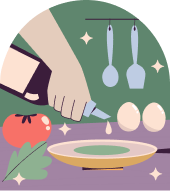
Flexible Learning
Study at your own pace, anytime, anywhere. Our online platform offers 24/7 access to lessons, so you can fit cooking into your busy schedule.

Hands-On Recipes
Practice with real recipes designed for all skill levels. From classic dishes to modern creations, you’ll master meals that impress every time.
What Our
Students Say
Hear from our happy students who have transformed their cooking skills with our courses. From beginners to seasoned cooks, our community loves sharing their success stories!
"This course completely changed how I cook! The instructors are so knowledgeable, and the lessons are easy to follow. I’m now confident making dishes I never thought I could."
Emma Johnson
"I love the flexibility of these courses. I can learn at my own pace and still feel supported. The recipes are amazing, and I’ve impressed my family with new dishes!"
Michael Chen
"The vegan cooking course was a game-changer for me. I learned so many creative ways to make plant-based meals that taste incredible. Highly recommend!"
Sophie Martinez
"The hands-on approach made learning so fun! I went from burning toast to baking artisan bread in weeks. Thank you for such an inspiring experience!"
James Carter
Discover Our Newest Culinary Courses
Get inspired by our latest additions! These exciting courses bring fresh ideas and techniques to your kitchen, perfect for food lovers eager to try something new. Browse our carousel to find your next culinary adventure.
Pavlova
4 Lessons
3.3 hours
Intermediate
What you'll learn
Meringue Fundamentals (Paragraph + List):
You’ll understand how to whip egg whites to the correct stiffness and fold in sugar without deflating the mixture.
Recognize stages of beaten egg whites (soft peaks → stiff peaks).
Techniques for incorporating sugar gradually.
Identifying when the meringue mixture is ready for baking.
**Shaping & Baking Techniques (Table):
Step Key Tip
Piping vs. Spreading Use a piping bag for defined edges; spread with a spatula for a rustic look.
Forming a Well Create a shallow indentation in the center to hold cream and fruit.
Oven Temperature Start at 120 °C (250 °F) for 15 min, then reduce to 90 °C (200 °F) to dry.
This table highlights how small adjustments in technique and temperature impact the final texture.
Cream & Fruit Assembly (Paragraph):
Learn to prepare stabilized whipped cream so it holds shape, and choose complementary fruits (e.g., kiwi, berries, passion fruit) to balance sweetness and acidity.
Espresso Martini
7 Lessons
2.5 hours
Intermediate
What you'll learn
Historical Background: Trace the origins of the Espresso Martini and understand its cultural impact in the mid-1980s London bar scene.
Ingredient Selection: Identify the ideal vodka and coffee liqueur varieties, plus quality indicators for fresh espresso beans.
Espresso Extraction: Master key variables—pressure, temperature, and timing—to pull a shot optimized for a cocktail.
Mixology Techniques: Learn dry-shaking and ice-shaking methods to achieve a rich, stable crema and a perfectly chilled drink.
Straining & Presentation: Discover how to double-strain for a crystal-clear pour, layer foam properly, and place garnishes without collapsing the crema.
Serving & Pairing: Explore glassware choices, serving temperatures, and ideal food pairings for various occasions.
Tiramisu
4 Lessons
2.5 hours
Intermediate
What you'll learn
Espresso Preparation & Soaking Technique (Paragraph + List):
You will master brewing strong espresso (or concentrated coffee) and learn how to quickly dip ladyfingers to prevent soggy layers.
Selecting grind size and brew method for intense flavor
Timing the dipping process: just enough to infuse coffee without collapsing the biscuit
Balancing sugar in coffee liquid to sweeten subtly
**Mascarpone Cream Assembly (Table):
Step Key Tip
Whipping Egg Yolks & Sugar Whisk until pale ribbon stage for stability
Folding Mascarpone & Cream Use gentle motions to maintain airiness
Flavor Infusion Add a shot of coffee liqueur or vanilla
This table highlights how each stage contributes to a smooth, stable cream.
Layering & Chilling (Paragraph):
Learn to create uniform layers—alternating soaked ladyfingers and mascarpone cream—then chill for at least 4–6 hours (or overnight) to allow flavors to meld and set properly. Presentation tips include smoothing the top layer and evenly dusting cocoa powder.
Variations & Garnishes (Bullet List):
Fruit Twist: Add a layer of fresh berries or fruit compote between cream layers.
Chocolate Shavings: Sprinkle dark chocolate curls on top for visual contrast.
Alcohol Options: Use Marsala, rum, or coffee liqueur to deepen flavor.
Crispy French Fries
5 Lessons
1.6 hour
Intermediate
What you'll learn
How to choose the ideal potato variety for frying
Techniques for cutting uniform sticks to ensure even cooking
Why soaking and rinsing potatoes removes excess starch
How to dry potatoes properly before frying to achieve crispiness
The double-fry method: temperature control and timing
Seasoning strategies for perfect flavor balance
Tips for storing and reheating fries without losing texture
Profiteroles with Custard
3 Lessons
1.3 hour
Intermediate
What you'll learn
How to prepare and bake pâte à choux (choux pastry) to produce perfectly puffed profiterole shells.
The step-by-step process for cooking a smooth, lump-free vanilla custard (crème pâtissière).
Techniques for piping and stuffing profiterole shells without causing them to collapse.
How to make a simple yet luscious chocolate sauce (ganache-style) for drizzling or dipping.
Presentation tips for arranging profiteroles on a platter or creating a classic croquembouche-style tower.
Vegetable Tart with Roasted Pepper and Goat Cheese
2 Lessons
2.2 hours
Intermediate
What you'll learn
How to roast bell peppers to achieve tender flesh and smoky flavor (peeling and deseeding techniques)
Techniques for caramelizing onions to bring out natural sweetness without burning
Preparing a Dijon crème fraîche base for balanced creaminess and tang
Layering vegetables and cheese to ensure even baking and flavor distribution
Baking tips to achieve a uniformly golden, flaky tart shell and prevent soggy bottom
Ritz Paris 24K Gold Margarita
7 Lessons
55 minutes
Intermediate
What you'll learn
Ingredient Selection & Sourcing: Identify and source the highest-quality tequila, triple sec, fresh citrus, and edible 24K gold.
Classic Margarita Technique: Master the foundational steps—shaking, straining, and rim-salting—to achieve a perfectly balanced margarita.
Gold Infusion Process: Safely incorporate 24-karat edible gold flakes and gold leaf for that unmistakable shimmer.
Presentation & Garnish: Plate and garnish your 24K Gold Margarita like a Ritz Paris bartender, including gold-rimmed glassware.
Advanced Tips: Explore optional flavor variations (e.g., citrus blends, infused agave) and learn how to adjust sweetness and acidity to taste.
Caramelized Banana
2 Lessons
2.4 hours
Intermediate
What you'll learn
Banana Selection & Ripeness
How to choose bananas at the peak of sweetness and proper firmness for caramelizing.
Recognizing visual and tactile cues that indicate ideal ripeness.
Caramel Sauce Preparation
Techniques for melting and browning sugar without burning—achieving a smooth, amber-hued caramel.
Balancing sweetness and depth by adjusting cook time and adding flavor enhancers like vanilla or citrus.
Cooking & Coating Bananas
Proper slicing methods to ensure even cooking.
Timing the addition of butter and bananas so the fruit softens without turning mushy.
Tips for gently tossing banana slices in hot caramel to create uniform coating.
Serving & Pairing Ideas
Creative ways to plate caramelized bananas as a standalone dessert or as a component (pancakes, waffles, yogurt, ice cream).
Garnish suggestions—nuts, herbs, spice dustings—to add texture and color contrast.
Storage and make-ahead strategies to preserve caramel’s texture and banana integrity.
Pulled Pork Sandwich
4 Lessons
3.3 hours
Intermediate
What you'll learn
Choosing the Right Cut: How to select a well-marbled pork shoulder (Boston butt) and understand why fat content matters for pulled pork.
Seasoning & Rubs: Crafting a balanced dry rub with spices and aromatics to build depth of flavor.
Cooking Methods: Techniques for both traditional smoker smoking (wood vs. charcoal), oven roasting, and slow-cooker approaches—pros and cons of each.
Temperature Control: Monitoring internal meat temperature, knowing when to wrap (the “Texas crutch”), and recognizing the “stall” point.
Shredding & Resting: Properly resting the cooked pork, shredding techniques (fork vs. claw), and keeping the meat moist.
BBQ Sauce Basics: Making a homemade barbecue sauce (vinegar-based, tomato-based, or mustard-based variations) and adjusting sweetness, acidity, and heat.
Sandwich Assembly: Choosing the ideal bun (brioche, kaiser roll, or potato roll), layering techniques to prevent sogginess, and adding complementary toppings (coleslaw, pickles, onions).
Plate Presentation & Storage: Tips for presentation (plating, garnishes) and storing any leftovers without losing texture or flavor.
Wagyu A5 Steak with Baby Potato Aioli and Demi-Glace
4 Lessons
2.3 hours
Intermediate
What you'll learn
Techniques for cooking A5 Wagyu to ideal doneness (medium-rare to rare)
How to prepare a silky baby potato aioli using sous-vide or stovetop methods
Steps to make a proper French-style demi-glace, including mirepoix sauté and red wine reduction
Plate composition strategies to showcase the steak’s marbling alongside colorful accents
Timing coordination for serving hot steak with freshly made sauces



